On Spain’s southeast coast lies the city of Valencia. It’s the country’s third-largest city and has a culture and language uniquely theirs.
While Spanish, yes, they do things a little differently in Valencia.
A bit rough around the edges, Valencia feels like a city that has gone through many transformations. And for some, it may take a slight warming up to appreciate all the city has to offer.
As Spain’s oldest city, it’s full of history with architecture that is a sight to see. Some buildings date back to the Reconquest, creating quite the juxtaposition with the futuristic Arts and Sciences Building. Truly a city built through the ages.
As a city that would have any history buff swooning, how does this translate into their food?
Valencia is the true home of paella, so of course, it’s everywhere, but not surprisingly, there’s much more.
Through culinary experiences, you’re sure to be reeled into the Valencia that the locals know and love.
To make the most of your time in the city, here are the best food experiences to have when visiting Valencia:
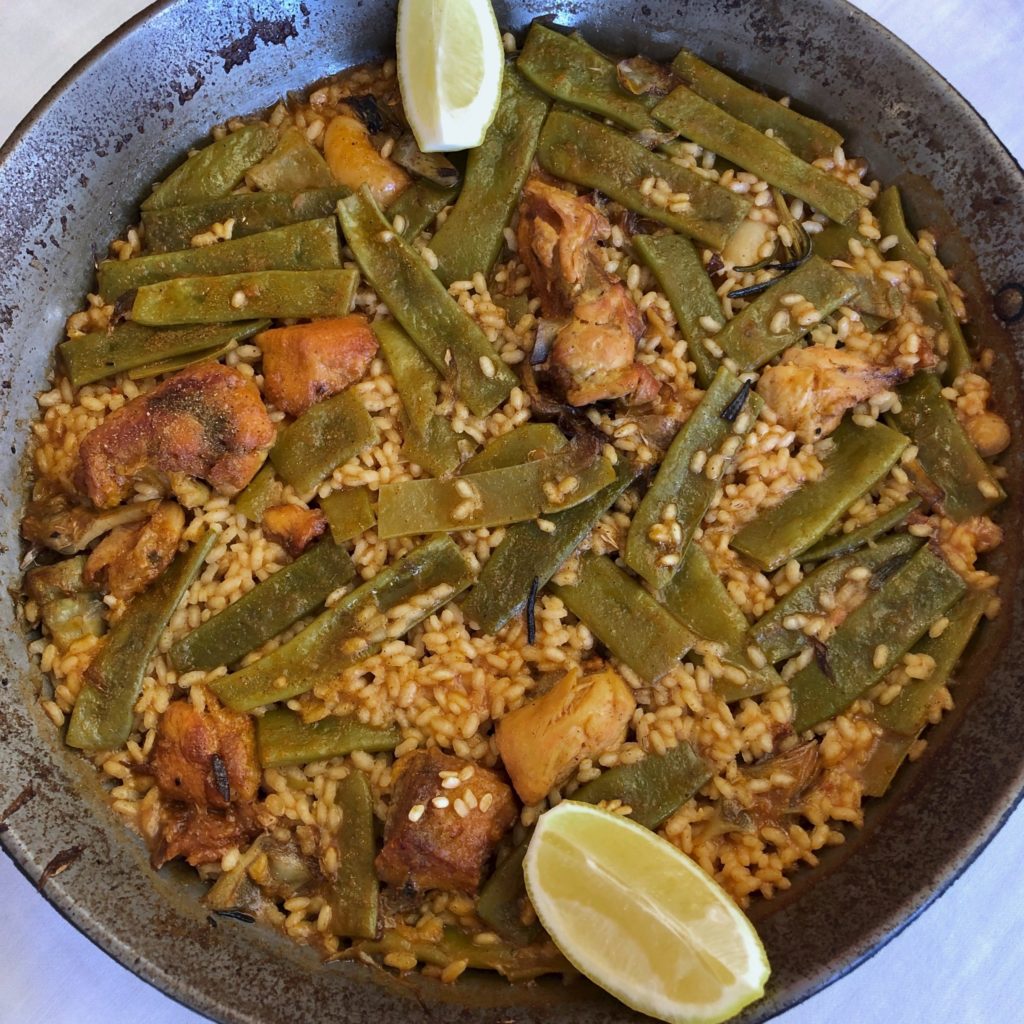
1. Eat Paella
Paella – the famous dish of Valencia. People often associate paella with Spanish cuisine, but locals will tell you that paella outside of Valencia isn’t real paella.
While you can enjoy various paella and rice dishes in Valencia, traditional paella is a must.
So what is traditional paella? That would be Paella Valenciana.
Paella Valenciana is made with local round grain rice, chicken, rabbit, green beans, butterbeans, artichokes, tomatoes, and seasonings like saffron and rosemary.
Historically, snails were a part of the recipe – especially if money was tight. Today, some recipes still include snails, while others have chosen to omit them altogether.
The best paellas have crispy bits on the bottom and edge of the pan. These crispy bits are called socarrat and come from rice being toasted and then caramelizing on the hot pan.
Typically, paella is eaten at lunch rather than dinner, but you’ll find restaurants in the city that offer it throughout the day.
If you have the time, venture out to El Palmer near Albufera National Park. Here you can enjoy paella near the rice paddies where the rice is grown. It’s about a 30-minute drive from the center of Valencia, or you can get there by train in just over an hour.
Keep in mind that most places require a minimum of 2 people per order, so you’ll usually have to decide as a table which paella you’d like to order.variou
Where To Try It:
Casa Carmela
A great place to enjoy paella near the beach. They’ve been around since 1922 and it’s a popular spot for local families to enjoy lunch. Reservations are recommended.
- Carrer d'Isabel de Villena, 155, 46011 València, Spain
El Racó de la Paella
A restaurant located in a Valencian house from the 1900s. Paella is their specialty, and reservations are required.
- Carrer de Mossèn Rausell, 17, 46015 València, Valencia, Spain
Goya Gallery
The service can be hit or miss, but they recently won 2nd place in a paella competition. If you do come here, make sure to make a reservation, and let them know you want Paella Valenciana as you’ll have to order it in advance.
- Carrer de Borriana, 3, 46005 València, Valencia, Spain
Restuarante Bon Aire
Located in El Palmar near the lagoon and rice paddies, this restaurant has won numerous paella competitions. If you’re making the trip, make sure to reserve a table.- Carrer de Cabdet, 41, 46012 València, Valencia, Spain
Restaurante Yuso or Restaurante Yuso II
One restaurant with two locations. Restaurante Yuso II has outdoor seating which is great on a nice day. At lunch, both restaurants do a menu del dia where you get 3 courses for about 10€. You’ll have to check which rice dishes are on offer that day, but they also have their full menu available in the evening.
- Carrer de la Creu, 4, 46003 València, Valencia, Spain
- Plaça del Carme, 6, 46003 València, Valencia, Spain
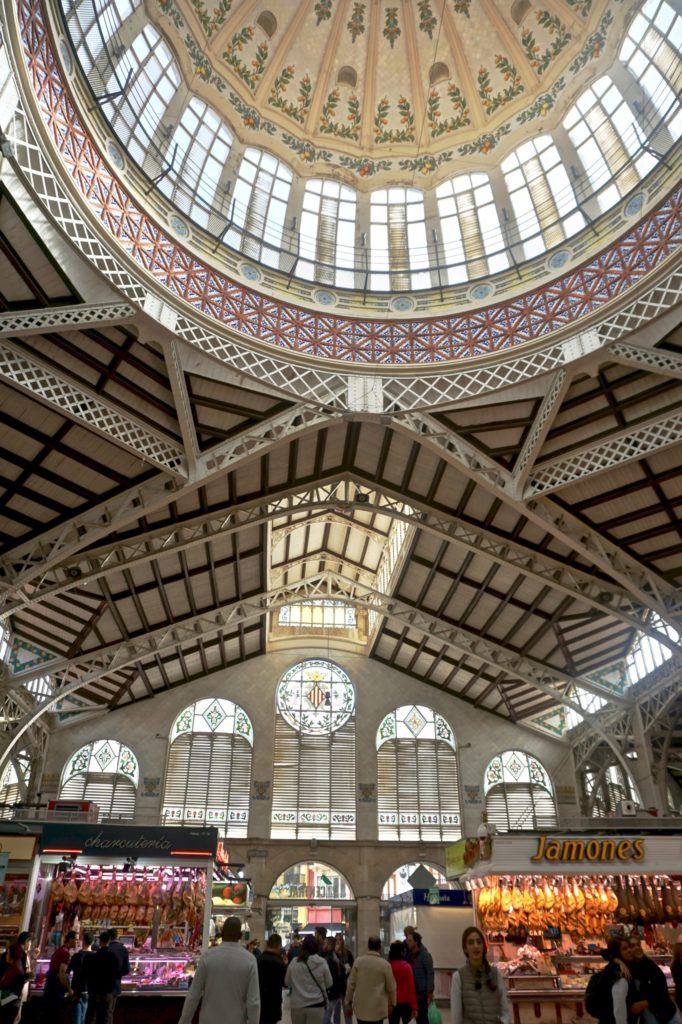
2. Wander Through Mercado Central
Mercado Central (also called Mercat Central) is a beautiful food market located in the center of Valencia.
Completed in 1928, Mercado Central is the largest covered food market in Europe.
Filled with grocers, butchers, fishmongers, and bakers, it’s a functioning market where locals buy their daily groceries.
There are also multiple stalls to buy souvenirs or enjoy a coffee, cocktail, or have a meal.
Aside from the variety of vendors, the thing that sets Mercado Central apart is its’ beauty.
It was designed in a Valencian Art Noveau style with a variety of materials. The unique roof makes the most of the Valencian sun, bringing in lots of natural light.
Open Monday through Saturday from 7:30am – 3pm, it’s a beautiful spot to wander and enjoy lunch.
Be sure to check out Central Bar. Run by Michelin-starred chef Ricard Camarena, the menu features delicious tapas and bocadillos (sandwiches).
With the cities best produce at its fingertips, all ingredients are sourced at the market each day.
While you may have to wait, it’s worth it.
Where To Go:
Mercado Central
- Plaça de la Ciutat de Bruges, s/n, 46001 València, Valencia, Spain
Central Bar
- Mercat Central, Plaza Ciudad de Brujas, s/n, 46002 Valencia, Spain
3. Sip on an Agua de Valencia
Walking through the streets of Valencia, you’ll see oranges growing everywhere – although you shouldn’t try and eat them as those aren’t the tasty ones.
As the orange citrus is famous in the city, it makes perfect sense to make proper use out of the ingredient. Better yet, use it to make a delicious cocktail.
Agua de Valencia is a popular drink consisting of freshly squeezed orange juice, cava, vodka, and gin. Some places may only use one spirit or add sugar too. You could think of it as an upgraded mimosa.
Recipes do vary slightly, and everyone alleges they make the best one. No matter which one you try, sipping an Agua de Valencia is a must when visiting the city.
Find a bar with a terrace and enjoy an Agua de Valencia outside – El Carmen and Russafa have many.
Or, a personal favorite: take a break as you wander through Central Market and grab one at La Cava De Supergourmet.
The lady running the bar is fun and makes a mean Agua de Valencia. Her version is just with vodka, though. According to her, that’s how you make the best one.
Where To Try It:
La Cava De Supergourmet
- Stalls 24-28 in Mercado Central
Cafe de Las Horas
- Carrer del Comte d'Almodóvar, 1, 46003 València, Valencia, Spain
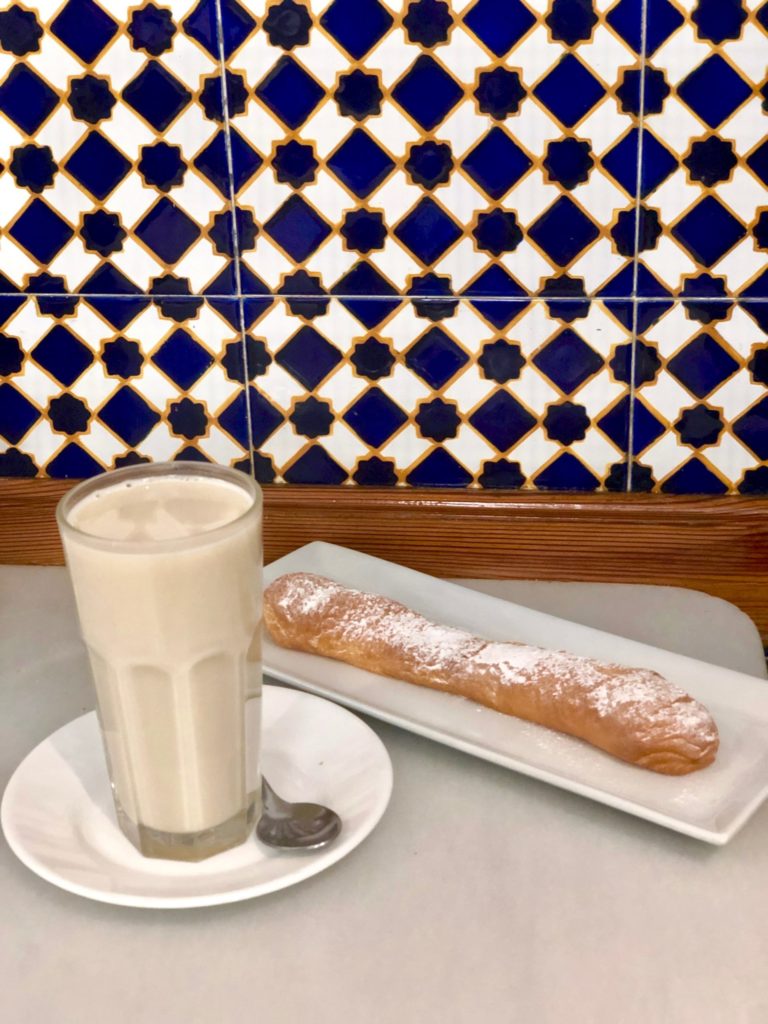
4. Try Horchata and Fartons
Despite sharing the same name, Valencian horchata is entirely different from the Mexican version.
Horchata in Valencia, or orxata as it’s called in Catalan, is a nut-milk. Whereas in Mexico, they make it with rice.
Here, horchata is made by blending together tiger nuts (chufas in Spanish), water, and sugar. It tastes a bit like almond milk, and is best enjoyed chilled.
Throughout the city, you’ll find various cafes called horchaterias that specialize in making horchata.
No horchata experience is complete without the addition of fartons. These slightly sweet pastries are made of a light dough and dusted or glazed with sugar.
Fartons are typically baked rather than fried and served at room temperature.
So why the pairing of horchata and fartons?
They’re served together because you’re supposed to dip the pastry into the horchata and enjoy. It’s a sweet pairing that’s surprisingly tasty.
Where To Try It:
Horchateria Santa Catalina
- Plaça de Santa Caterina, 6, 46001 València, Valencia, Spain
Horchateria Daniel
- Carrer de Sant Vicent Màrtir, 7, 46002 València, Spain
- Mercado de Colón, Carrer de Jorge Juan, 19, 46004 Valencia, Spain
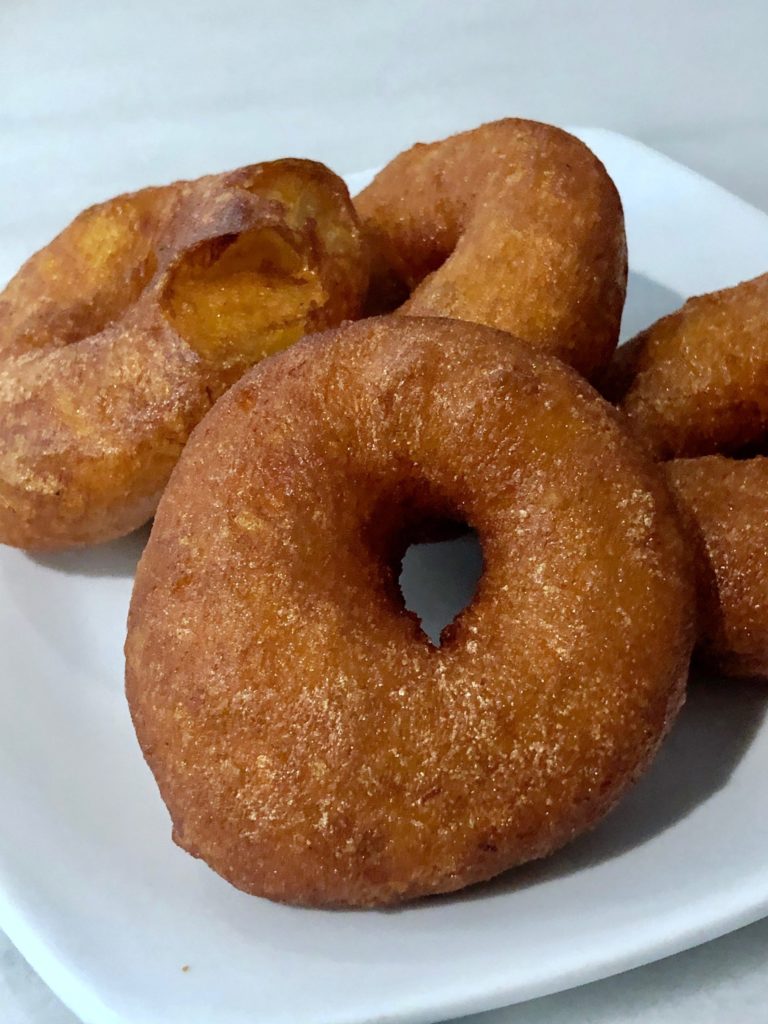
5. Enjoy Buñuelos
Simply put, buñuelos are Valencia’s equivalent of a doughnut. While not perfectly round in shape, they do have a hole in the center.
They’re made of a pumpkin-based dough and are deep-fried in oil. Then, they’re finished off with a dusting of sugar.
Given that they’re not overly sweet, a popular way to enjoy buñuelos is dipping them into cups of thick, rich chocolate.
Traditionally, they’re eaten during Fallas, an annual festival that honors Saint Joseph, the patron saint of carpenters. It’s Valencia’s biggest festival, and it involves art, fires, explosions, and parades.
While buñuelos are considered one of the foods of Fallas, you can still find them year-round in the city. Most horchaterias serve both fartons and buñuelos, and they’ll often serve churros too.
Where To Try Them:
Buñuelería El Contraste
- Carrer de Sant Valero, 12, 46005 València, Spain
Horchateria Santa Catalina
- Plaça de Santa Caterina, 6, 46001 València, Valencia, Spain
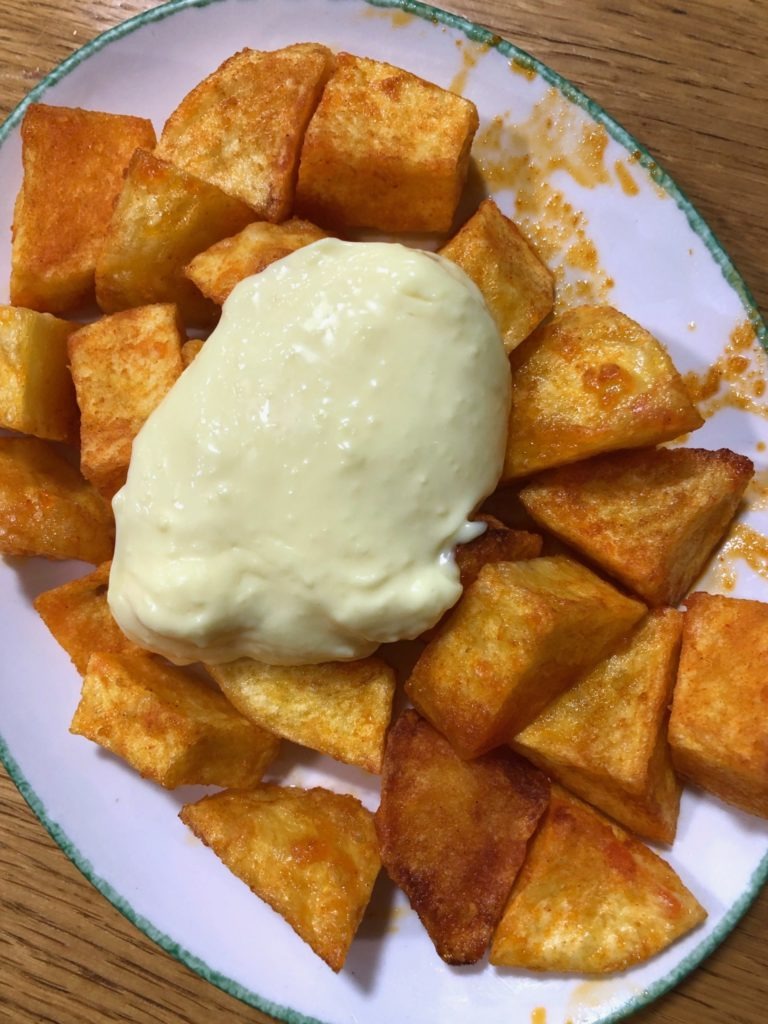
6. Eat Tapas
A trip to Valencia isn’t complete without enjoying tapas.
While tapas-style eating is now trendy worldwide, eating tapas in Spain is a way of life.
I
n Valencia, the largest meal of the day is usually eaten at midday, so tapas (or small plates) are generally enjoyed in the evening – although you can get them during the day too.
Eating tapas is a social affair. It’s common for groups of friends to order various tapas to pick at while having drinks.
Given Valencia’s proximity to the sea, many of the popular tapas here are fish or seafood-based. Seasonality is also considered, so most menus will change based on the time of year.
Some of the most famous tapas include:
- Patatas bravas – Fried potatoes topped with aioli and spicy sauce
- Grilled Squid
- Calamari – Rings of fried battered squid
- Puntillitas – Fried battered mini squid
- Esgarraet – Strips of bacalao (salted codfish) and roasted red peppers in olive oil
- Prawns – Either grilled (a la plancha), fried (frito), or sizzling in a dish with olive oil and garlic (al ajillo)
- Grilled Artichokes
- Pescaditos – Tiny fish that are battered and fried
- Pimientos de Padrón – Padron peppers that are fried in olive oil
Where To Try Them:
Bar Ricardo
- Carrer del Dr. Zamenhof, 16, 46008 València, Valencia, Spain
Bar Richard
- Carrer del Dr. Zamenhof, 16, 46008 València, Valencia, Spain
Boatella Tapas
- Plaça del Mercat, 34, 46001 València, Valencia, Spain
Tasca Angel
- Carrer de la Puríssima, 1, 46001 València, Valencia, Spain
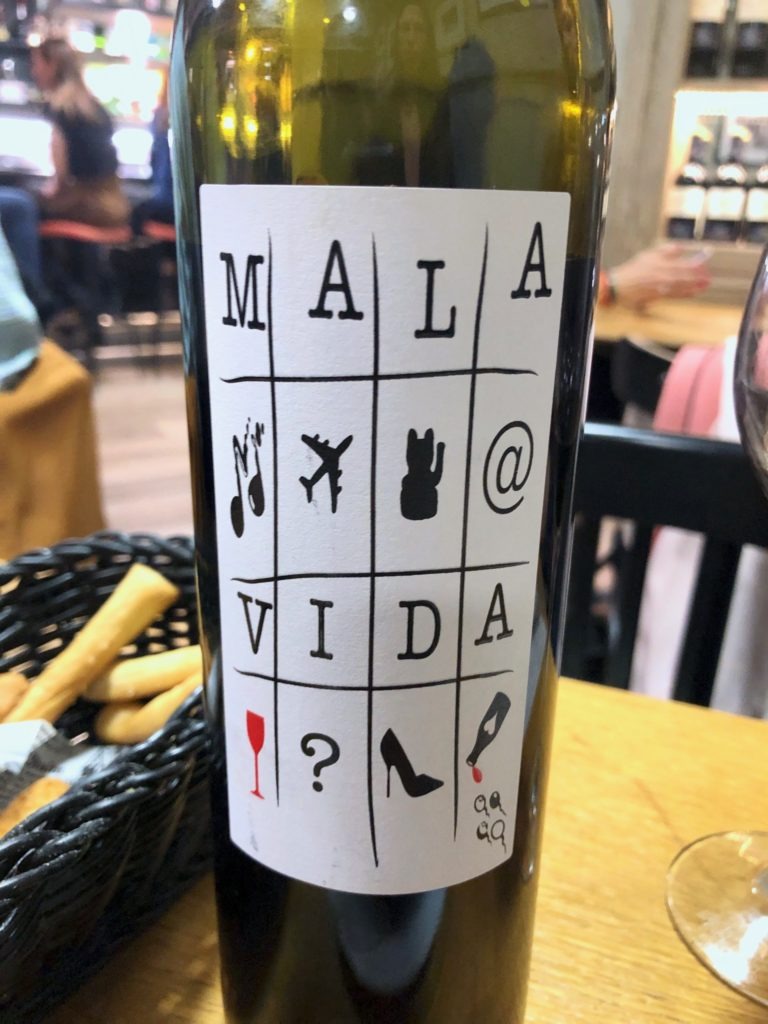
7. Try Local Wine
According to archeologists, Valencia has been a grape-growing and wine-making region for thousands of years.
While not as famous in the wine world as other Spanish regions like Rioja or Ribera del Duero, Valencia is a region not to overlook.
With its own denominación de origen (protected designation of origin), Valencian wines are slowly becoming more accessible worldwide.
The region of Valencia has two designated titles – D.O. Valencia and D.O. Utiel-Requena.
There are a number of red grapes grown in D.O. Valencia, but the most popular are Monastrell, Tempranillo, Granacha, and Cabernet Sauvignon.
There is no one style that this region is known for, but reds tend to be more fruit-forward and centered around Monastrell.
Macabeo, Merseguera, and Chardonnay are typical white varietals that make up the region’s dry white wines.
Moscatel grows well here, making dessert wines very popular too.
D.O. Utiel-Requena is about an hour inland of Valencia’s city center. It’s from this area where the notable reds of the region are made.
The most popular grape being Bobal (a native varietal), but Tempranillo and Cabernet Sauvignon are becoming more prevalent – in particular, for blending. This region makes some great cavas (sparkling wine) as well.
With so much wine being made in the region, trying the local varietals is a must when visiting.
Wine tours are available if you’d like to visit the vineyards, but numerous wine bars in the city also offer tastings of local wines.
Where To Try It:
El Cubo de Baco
- Carrer del Túria, 56, 46008 València, Valencia, Spain
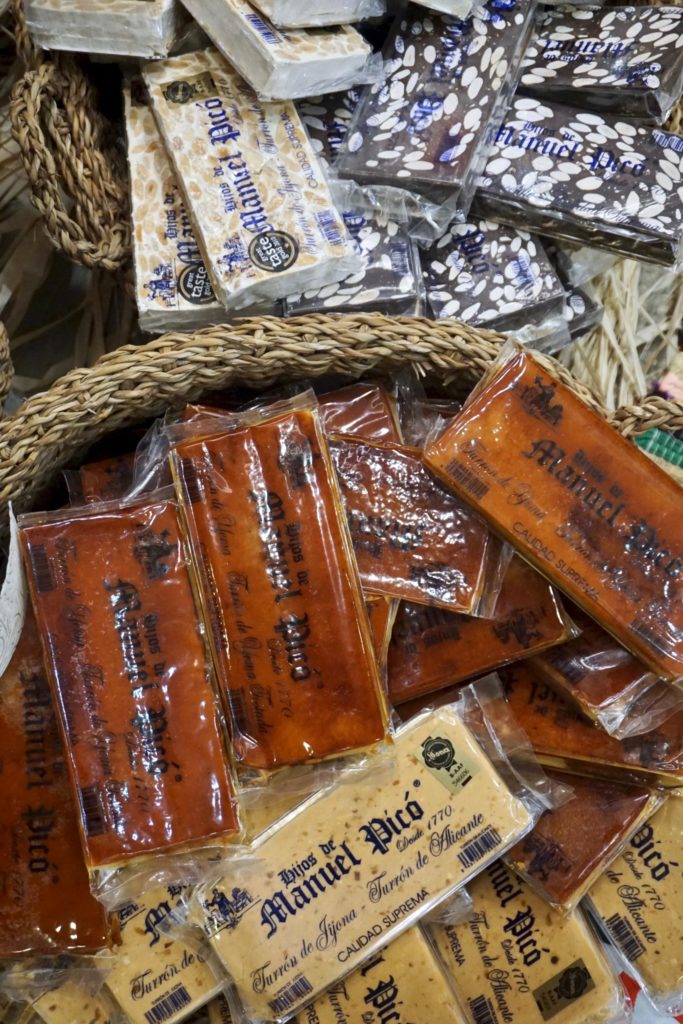
8. Try Turrón
While most popular during the Christmas season, turrón is a sweet Valencian treat that can be enjoyed any time of the year.
It’s now popular throughout Spain, but turrón’s origins are in Valencia.
Traditional turrón is made of Marcona almonds, honey, and sugar. There are two main types: blando (soft) or duro (hard).
Turrón blando uses ground almonds and is tan in color. It has a soft chewiness to it, making it somewhat similar to marzipan.
Turrón duro is white with almond pieces in it. It has a crunchier texture and is more similar to nougat.
While those were the only types of turrón available in the past, a variety of flavors are now common. The most popular flavor being chocolate.
Other flavors include turrón with liquor, sesame, burnt egg yolk, and white chocolate.
Where To Try It:
Turrones Ramos
- Carrer de la Sombrerería, 11, 46001 València, Valencia, Spain

9. Visit Mercado de Colón
Mercado de Colón is an iconic building that was initially built as a market in 1916.
The modernist building underwent a renovation project, and Mercado de Colón reopened as a hub for dining and shopping.
The revamped Mercado de Colón is now complete with gourmet markets, bars, and restaurants. They also host a variety of events throughout the year.
The building is beautiful and is worth a visit to see. Stop in for a drink or have something to eat and soak up the atmosphere.
Try Horchatería Daniel for some horchata and fartons, or make a reservation to dine at Ricard Camarena’s Habitual.
Where To Go:
Mercado de Colón
- Carrer de Jorge Juan, 19, 46004 València, Spain
Habitual
- Mercado de Colón, Carrer de Jorge Juan, 19, 46004 Valencia, Spain
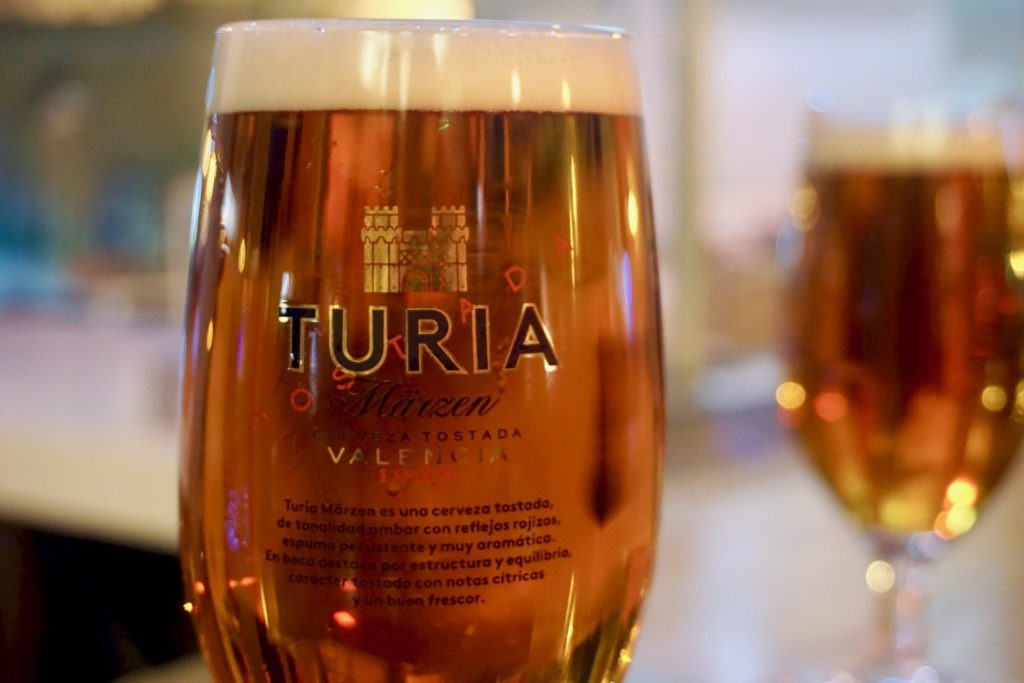
10. Bar Hop in Ruzafa
Ruzafa is arguably Valencia’s coolest neighborhood. Although once considered a seedy area, Ruzafa is now the trendy place to be.
It’s a unique neighborhood that first attracted the city’s artists and hipsters. Now, it’s a popular destination for locals and tourists alike.
With multiple galleries, unique shops, fun bars, and delicious food, Ruzafa is a great neighborhood for wandering and going out at night.
To experience the quintessential quirkiness of Ruzafa, head to Ubik Café. It’s part library and part cafe. They host events regularly, and it’s a popular spot for locals to hang out.
Where To Go:
Cafe Berlin
- Carrer de Cadis, 22-24, 46004 València, Valencia, Spain
Casa Pepe
- Carrer de Sueca, 33, 46006 València, Spain
Olhöps Craft Beer House
- Carrer de Sueca, 21, 46004 València, Valencia, Spain
Olhöps Craft Beer Lab
- Carrer de Carles Cervera, 22, 46006 València, Valencia, Spain
Ubik Café
- Carrer del Literat Azorín, 13, 46003 València, Valencia, Spain
So there you have it – the top 10 food experiences everyone needs to try when visiting Valencia.
Check out the map below to see where all the places mentioned are located.
Tip: Click the star above next to the map title – Valencia: Best Food Experiences to view and save the map on your Google Maps account
>> Have you been to Valencia? Let us know your favorite food experiences!



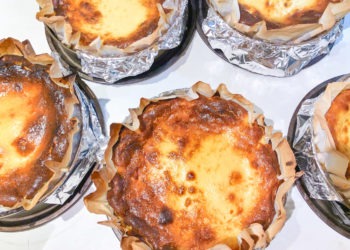
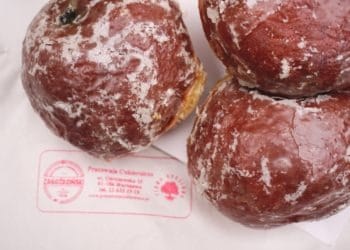










Great recommendations! This list is so complete it must have been done by a local! 🙂